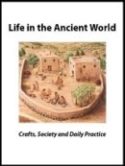
Two neolithic shrines located in the Khaybar province of Saudi Arabia. Courtesy AASKSA and The Royal Commission for AI-‘Ula.
Some 1,600 monumental stone structures known as mustatils dot the desert landscape of northwestern Saudi Arabia. Constructed out of two long walls connecting thick ends, these rectangular neolithic enclosures were used by the nomadic people of Arabia some 7000 years ago. According to an article published in the journal Plos One, the structures served as a location for sacrifice to an unknown deity or possibly for pilgrimages. This makes mustatils some of the earliest examples of religious practices in the area and an evidence of a large-scale cultural practice.

A Desert Shrine
The mustatils–meaning “rectangle,” in Arabic–have long been some of the most enigmatic features of Saudi Arabia’s neolithic landscape. It was only with the excavations of a remote mustatil, 35 miles east of the city of Al-‘Ula, that a plausible hypothesis for their purpose was put forward. Examining the 460-foot-long structure, the team–led by archaeologists from the University of Western Australia–discovered a rich assemblage of animal bones, specifically the horns and skull bones of large ruminants. These bones were found congregated around a large stone erected in a chamber at one end of the mustatil.
Having examined the Al-‘Ula mustatil and others in the region, the team proposes that these structures most likely operated as open-air sanctuary sites for the nomadic peoples, who would gather there and render sacrifices to their god or gods. It is possible that the standing stones are connected to the later pre-Islamic practice of betyls (Arabic for “house of the god”), since they may have functioned as a mediator between the people and their gods for which the sacrifices were made. The Al-‘Ula mustatil has been carbon-dated to the end of the sixth millennium BCE and may be one of the earliest examples of religious practices in the region.

Aerial photo of the Al-‘Ula region with the mustatil visible in the lower center of the image. Courtesy AASKSA and The Royal Commission for Al-‘Ula.
The recovered animal remains apparently accumulated over a period of time, suggesting that the enclosures were used repeatedly. Given this fact and the secluded location of the mustatils, the team further proposed that they may be evidence for a large-scale pilgrimage practice in which a group, or various groups, converged to reaffirm their collective identity through the performance of their religious practices. Based on the prevalence of horns and skull remains, it is likely that only the head of the animal was offered as a sacrifice, while the rest of the carcass was utilized during feasting associated with the ritual. However, so far, no clear evidence of feasting has been found near the mustatils.
Cattle and Cult in Ancient Arabia
Surprisingly, the predominant animal used in these hypothetical performances appears to have been domesticated cattle, which represent nearly 90 percent of the faunal remains. This is particularly striking, as cattle require a large quantity of food and water, both of which are assumed lacking in northwestern Saudi Arabia at the time. The surprising evidence for sacrifices of cattle, therefore, indicates that the climatic conditions must have been much better than assumed and that people assigned extreme value to the sacrifices.
“The predominance of cattle suggests that the region had enough vegetation and water to sustain herding, which could indicate the continuation of the Holocene Humid Period in this region. It suggests that our understanding of the Neolithic period in the Arabian Peninsula needs further revision,” said Melissa Kennedy, director of the excavation.
Found throughout the region, mustatils spread across an area of over 115,000 square miles. “Collectively, what we’ve seen across all these monuments is the suggestion that a large part of northern Arabia was marked by a similar cultic belief and ritual construction, as well as pilgrimage activity – a more connected landscape than was usual for this period,” Kennedy stated.
Read more in Biblical Archaeology Daily:
The Göbekli Tepe Ruins and the Origins of Neolithic Religion
All-Access members, read more in the BAS Library:
In the Beginning: Religion at the Dawn of Civilization
The History of Israelite Religion
Pagan Yahwism: The Folk Religion of Ancient Israel
Not a BAS Library or All-Access Member yet? Join today.The post Neolithic Shrines and Pilgrimages in Saudi Arabia appeared first on Biblical Archaeology Society.


0 Commentaires